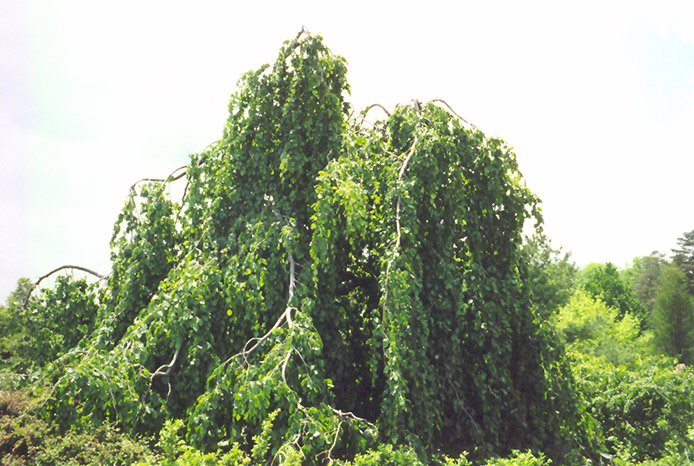Plant Finder
Height: 15 feet
Spread: 20 feet
Sunlight:
![]()
Hardiness Zone: 4b
Other Names: Common Beech, European Beech
Description:
A most unusual specimen tree for the true collector with a contorted, non-uniform and almost arching habit of growth, branching is very architectural in winter; quite particular about growing conditions, requires rich soil and significant moisture
Ornamental Features
Parasol Beech is primarily valued in the landscape for its cascading habit of growth. It has dark green deciduous foliage which emerges light green in spring. The serrated pointy leaves turn an outstanding harvest gold in the fall. The twisted silver bark is extremely showy and adds significant winter interest.
Landscape Attributes
Parasol Beech is a deciduous tree with a shapely form and gracefully arching branches. Its relatively coarse texture can be used to stand it apart from other landscape plants with finer foliage.
This is a relatively low maintenance tree, and is best pruned in late winter once the threat of extreme cold has passed. Deer don't particularly care for this plant and will usually leave it alone in favor of tastier treats. It has no significant negative characteristics.
Parasol Beech is recommended for the following landscape applications;
- Accent
- Shade
Planting & Growing
Parasol Beech will grow to be about 15 feet tall at maturity, with a spread of 20 feet. It has a low canopy with a typical clearance of 2 feet from the ground, and is suitable for planting under power lines. It grows at a slow rate, and under ideal conditions can be expected to live to a ripe old age of 100 years or more; think of this as a heritage tree for future generations!
This tree should only be grown in full sunlight. It does best in average to evenly moist conditions, but will not tolerate standing water. It is not particular as to soil type or pH. It is somewhat tolerant of urban pollution, and will benefit from being planted in a relatively sheltered location. This is a selected variety of a species not originally from North America.
This Plant Finder tool is an online catalog representing many of the varieties that we carry over the course of the season, and is intended for informational purposes only. Inventory varies seasonally, so we cannot guarantee that every plant will be in stock at all times - please contact the store for current availability. It does not include our entire inventory of plants, so be sure to visit us to see varieties that may not be represented on this list.

